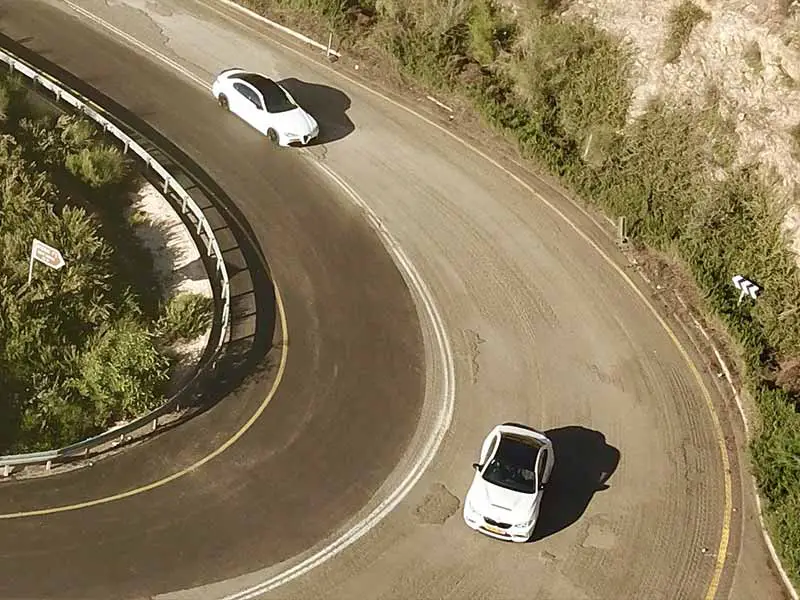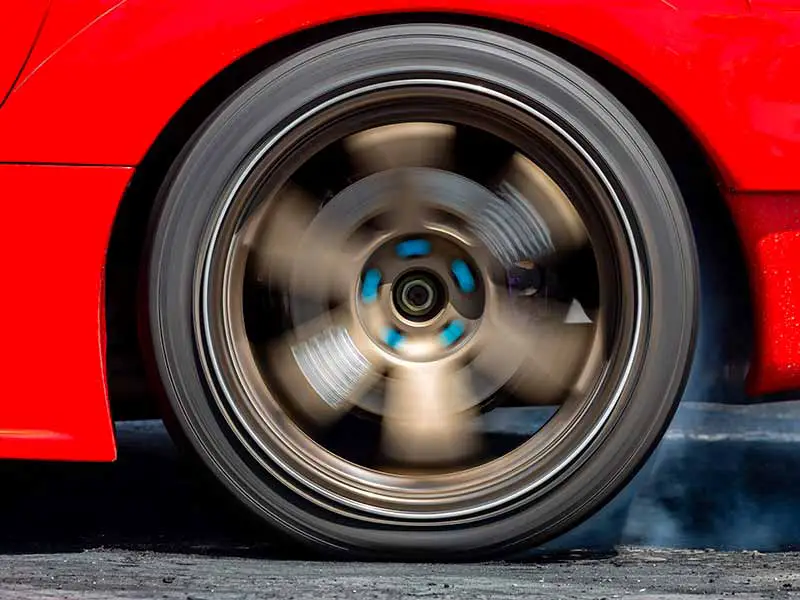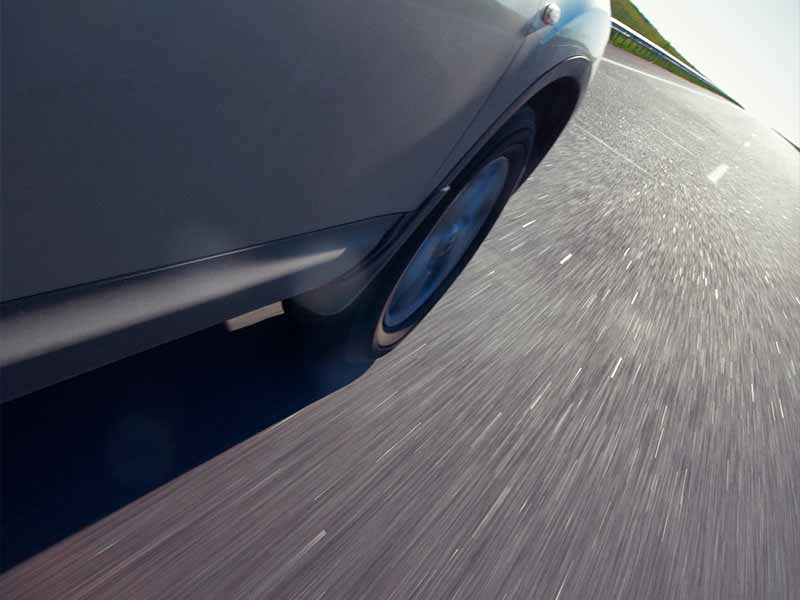Did you know that choosing the right tire speed rating for your vehicle is essential for both safety and performance? W speed rated tires are designed for high-performance vehicles, offering superior handling and stability at high speeds, making your driving experience more exciting and enjoyable.
W Speed Rating
W speed rating is a classification for tires that can handle speeds up to 168 mph without compromising safety or performance. The rubber formulation is designed to manage heat produced at these high speeds.
W-rated tires are ideal for high-performance cars and sports sedans that demand improved handling, enhanced traction, and stability at high speeds.
In this article, we will explore the meaning of the speed rating W, its benefits, how to identify W-rated tires, when to choose them, and essential maintenance tips to ensure optimal performance and safety on the road.
W Speed Rating: What Does It Mean?
A speed rating of W refers to the performance level of tires for cars and trucks. When a tire has a W-rating, it means it can handle a specific range of speeds without compromising safety or performance.
Here’s what you need to know about W speed rated tires:
Comparison To Other Tire Speed Ratings
Tires have different speed ratings, and each rating is represented by a letter. The speed rating gives us an idea of how fast a tire can safely go. The W speed rating falls towards the higher end of the speed rating scale.
To give you a better understanding, let’s compare it with other common speed ratings:
- S and T rated tires: These are standard for most family cars and minivans. They have a maximum speed of 112 mph and 118 mph, respectively.
- H rated tires: Found on many sedans and coupes, these tires have a maximum speed of 130 mph.
- V rated tires: These tires have a maximum speed of 149 mph and are commonly used on sporty cars.
- Z rated tires: Built for high-performance vehicles, these tires can handle speeds over 149 mph.
- W rated tires: With a maximum speed of 168 mph, W rated tires are designed for high-performance cars and sports sedans.
- Y rated tires: These tires can handle speeds up to 186 mph and are used on supercars and high-end sports cars.
Speed Range And Maximum Speed For W-Rated Tires
Now that you know how W rating compares to other tire speed ratings, it’s crucial to understand its speed range. W rated tires are designed to perform well and maintain safety at speeds up to 168 mph.
It’s important to remember that this doesn’t mean you should drive at that speed on public roads. Always follow the speed limits and obey traffic rules to ensure safety.

Benefits Of W Speed Rated Tires
W-rated tires aren’t just about the high-speed capabilities. They also offer some notable benefits that can enhance your driving experience, particularly if you have a high-performance vehicle. Let’s dive into the advantages of using W speed rated tires:
Improved Handling And Stability At High Speeds
A tire speed rating of W is specifically designed for high-speed driving. They offer superior handling and stability when compared to lower speed-rated tires. This is particularly important when navigating sharp turns or sudden lane changes at high speeds. With W rated tires, you can expect your vehicle to be more responsive and stable, giving you a greater sense of control.
Enhanced Traction For Performance Driving
W speed rated tires are constructed with performance in mind. They usually feature advanced tread patterns and rubber compounds that provide better grip and traction on the road. This improved traction can be particularly beneficial during acceleration, cornering, and braking, especially in high-performance situations like track driving.
Built For Vehicles With Powerful Engines
High-performance cars and sports sedans often have more powerful engines that require tires capable of handling the increased speed and power. W speed rated tires are designed to meet the demands of these powerful engines. Their construction, materials, and design all work together to provide the support, durability, and performance necessary for these types of vehicles.

How To Identify W Speed Rated Tires
When it comes to choosing the right tires for your vehicle, knowing how to identify W speed rated tires is essential. This section will guide you through locating the speed rating on a tire sidewall and understanding the tire size and performance code.
Locating The Speed Rating On A Tire Sidewall
The speed rating is usually included in the tire size and performance code, which can be found on the tire’s sidewall. The code consists of a series of letters and numbers. For example, let’s consider the following code: 225/50R17 94W.
In this example, the letter ‘W’ at the end of the code represents the speed rating. This tire is W speed rated and capable of handling speeds up to 168 mph.
Understanding Tire Size And Performance Code
To help you better understand the tire size and performance code, let’s break down the example mentioned earlier, 225/50R17 94W:
- 225: This number represents the tire width in millimeters.
- 50: This number is the aspect ratio, which is the ratio of the tire’s height to its width (in this case, the tire’s height is 50% of its width).
- R: This letter stands for radial, which indicates the tire’s construction type.
- 17: This number represents the wheel diameter in inches (the tire is designed for 17-inch wheels).
- 94: This number is the load index, which indicates the maximum weight the tire can support when properly inflated.
- W: As mentioned earlier, this letter is the speed rating, indicating that this tire can handle speeds up to 168 mph.
Importance Of Matching Speed Ratings On All Four Tires
It’s crucial to have the same speed rating on all four tires of your vehicle. Mixing different speed-rated tires can lead to uneven handling and may compromise your vehicle’s safety and performance. Always consult your vehicle owner’s manual for the recommended speed rating and make sure all four tires have the same rating when you replace them.

When To Choose W Speed Rated Tires
Selecting the right tire for your vehicle is essential to ensure a safe and enjoyable driving experience. W speed rated tires are suitable for specific vehicles and driving conditions. In this section, we will discuss when to choose W speed rated tires based on various factors.
Types Of Vehicles That Require Or Benefit From W Speed Rated Tires
W speed rated tires are designed for high-performance vehicles with powerful engines. They are best suited for sports sedans, luxury cars, and some high-performance sports cars. These vehicles typically have the power and capabilities to reach higher speeds, requiring tires that can handle those speeds safely.
If you are unsure about the speed rating recommended for your vehicle, consult your owner’s manual or check the tire information sticker located inside the driver’s doorjamb.
Performance Driving Or Track Events
If you frequently participate in track events or performance driving, W speed rated tires could be the right choice for you. These tires offer improved handling, stability, and traction, making them well-suited for high-speed driving situations. However, it’s essential to ensure that W rated tires are suitable for your specific vehicle and the type of driving you will be doing.
Factors To Consider: Driving Style, Road Conditions, And Climate
Before choosing W speed rated tires, take into account your driving style, local road conditions, and climate. W speed rated tires are designed for performance driving, so if you primarily drive on city roads or highways at moderate speeds, you might not need these high-performance tires.
Road conditions and climate also play a significant role in your choice of tires. W speed rated tires often have less tread depth and a more performance-oriented tread pattern, which may not be ideal for driving in heavy rain, snow, or on rough roads. In such cases, a tire with a lower speed rating and more focus on all-season performance might be more appropriate.

Maintaining W Speed Rated Tires
Proper maintenance of your W speed rated tires is essential to ensure their longevity, safety, and performance. This section will discuss the importance of tire inflation, rotation, alignment, and tread wear monitoring for W speed rated tires.
Importance Of Proper Inflation And Tire Pressure Checks
Maintaining the correct tire pressure is crucial for the optimal performance of W speed rated tires. Underinflated or overinflated tires can lead to uneven wear, reduced traction, and even tire failure. Check your tire pressure regularly, at least once a month, and always follow the manufacturer’s recommended tire pressure listed in your vehicle’s owner’s manual or on the tire placard.
Regular Tire Rotation And Alignment
To ensure even wear and prolong the life of your W speed rated tires, it’s essential to rotate them regularly. Tire rotation should be done every 5,000 to 7,500 miles or as recommended by your vehicle’s manufacturer. Additionally, maintaining proper wheel alignment helps prevent uneven wear and promotes better handling and stability.
Monitoring Tread Wear For Safe Driving Performance
The tread on your W speed rated tires plays a crucial role in providing grip and traction, especially in wet or slippery conditions. Monitor your tires’ tread depth and look for any signs of uneven or excessive wear. Most tires have built-in tread wear indicators, which are raised bars within the tread grooves. When these bars become flush with the surrounding tread, it’s time to replace your tires.
Keep in mind that W speed rated tires may have less tread depth and wear faster than lower speed-rated tires due to their performance-oriented design. Regularly checking the tread depth will help ensure that your tires are still safe for use.
Resources
Below are some links you may find helpful when learning about tires
Final Thoughts
W-rated tires offer improved handling, enhanced traction, and stability at high speeds, making them well-suited for sports sedans, luxury cars, and some sports cars. Always consult your vehicle’s owner’s manual for the recommended speed rating and ensure all four tires have the same rating for optimal safety and performance.
Good luck and happy motoring.





